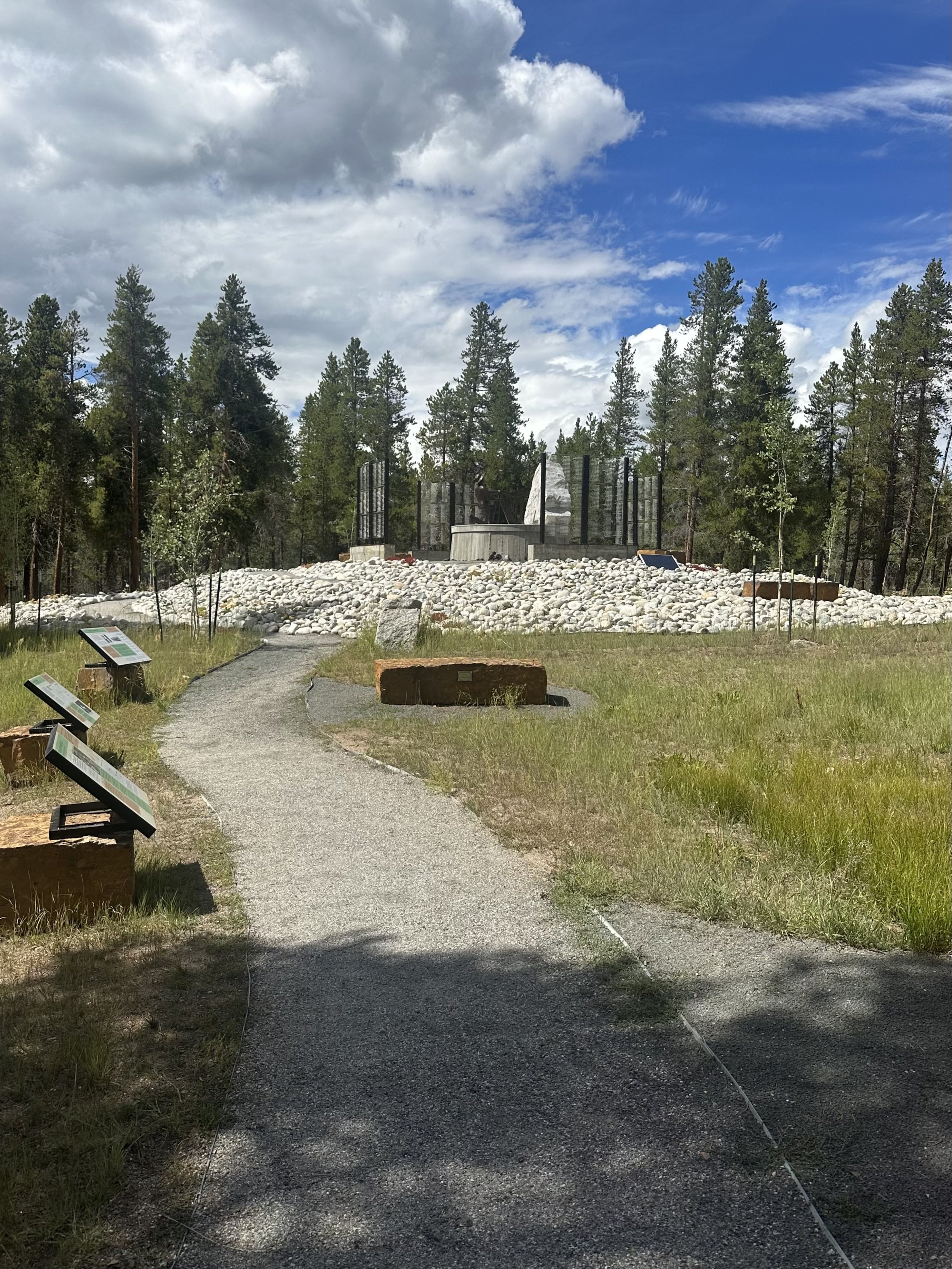The Leadville Irish Miners’ Memorial is a thoughtful place. To get to the memorial, I drove past the familiar gateway to the graveyard and kept driving a bit further than I’d ever been before. I went on a summer day and was the only visitor I saw.
There are a few placards to read and study before walking up the memorial path. The placards tell a tale of squalid living and working conditions endured by the Irish immigrant miners, and an uprising against the mining industry and the then-governor of Colorado.
I love reading, and I love writing, but reading and writing only does so much for me. That’s probably why I’m also an artist. Some things are so big that they need to be expressed in multiple formats for any justice to be done. In turn, things like this are best learned about through different senses. The placards at this memorial, to me, are like reading a book, I sort of get it, it flashes by in my head. The facts and figures all make technical sense. But there’s something missing.
The missing piece is filled in by the memorial itself. This is where the history of the Irish Miners really connected in my head.
To see the memorial, you walk up a spiraling path which is lined with native plants and mining artifacts. What the artifacts are, is not always clear - to me at least. The process of walking the spiral reminded me a lot of walking through remote forests near Leadville. Sometimes, I come across some sort of artifact or rusted metal, where it’s clear that it’s a mining relic, but I have no idea what it is.
After spiraling upwards very slowly, like on a zen path, you see a statue surrounded by clear glass panels.
The bright glass panels contain columns of names of miners and family members who passed away, including their age or estimated age. It’s heartbreaking to see how young people were, including stillborn children with the same last name.
Having lived in Washington D.C. for a couple years and living amongst many memorials and museums, the memorial that this recalls the most for me has to be Maya Lin’s Vietnam Memorial.
Seeing the names on the glass panels was very moving to me. There’s something about seeing names on a wall that puts the facts and figures into perspective. The names being on glass is deeply symbolic. You can look right through glass, if you want. You can also look right through the death and destruction that mining can bring to a community.
Overall I was glad to see a memorial like this. It’s an important place to visit in Leadville, even if it’s not centrally located in town itself. Leadville’s mining history has plenty of facets - some facets are bright, and some of them flash darkly. I personally have been like many others who get swept up by the romance of Leadville’s history, and I admit that I have focused on the more glamorous side of things. I love to read about colorful characters in Leadville’s history such as Horace Tabor, Molly Brown, and that one time that somehow, Oscar Wilde ended up in town. And who wouldn’t be fascinated by the Ice Palace? There’s the fun of Leadville’s Boom Days celebration where everyone dresses up in 1880s fashion, there’s burro racing, festival booths, Wild West re-enactments, and plenty of gorgeous horses trotting down Harrison Avenue. There’s mining drilling competitions, and I have several memories of a Boom Days booth where I could “pan for gold” as a kid. Of course mining isn’t all fun and games, and recent memory serves to this fact as well - anyone who can remember the molybdenum mine closing in the 1980s can remember some lean and mean times.
And so, the dark and light facets of Leadville’s mining history are further clarified in this memorial. In addition to Boom Days, the Mining Museum, the Mineral Belt Trail, and many other sights to see around town, this brilliant memorial shows us the somber side of Leadville’s mining history.
In so many Western movies, the first scene shows a newcomer in town. We see man in a cowboy hat getting off a train, or a lone mounted figure riding down a dusty main street. Usually in the movies, you get the feeling that the newcomer has some sort of opportunity in town, or that they want to be there. The Leadville Irish Miners’ memorial is a thoughtful place to honor and learn about an entire class of people who certainly didn’t want to be in Leadville, as so many of them were pretty much much forced to be there. They were brutally oppressed, desperate workers who worked in devastating conditions, all of whom turned out the memorable wealth of the land for the low wage of a few dollars per day before dying very young.
I will return to this memorial frequently, and I still have to see it at night when light shines through the glass.





